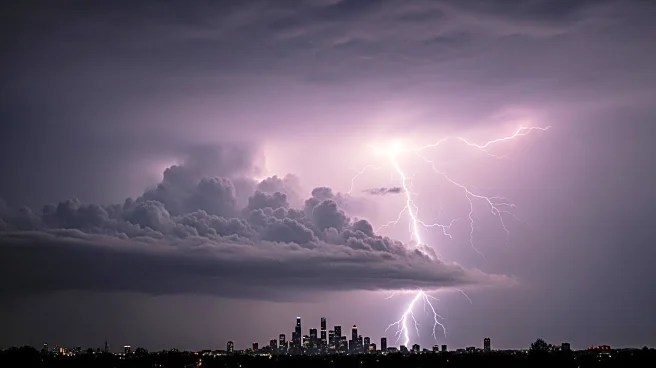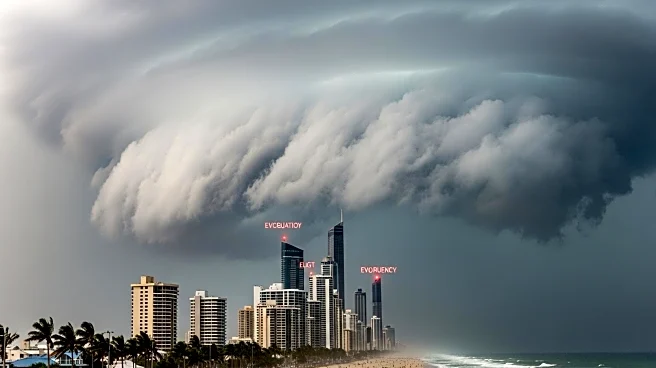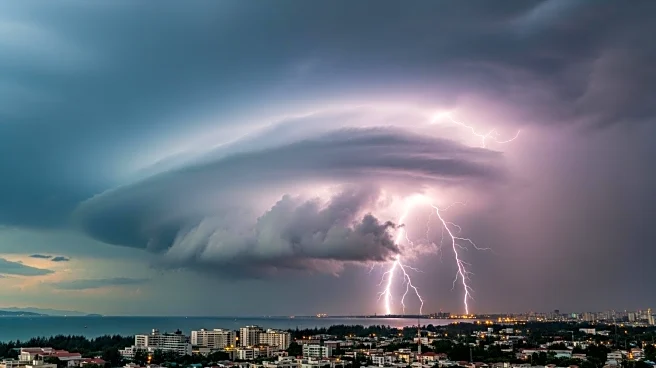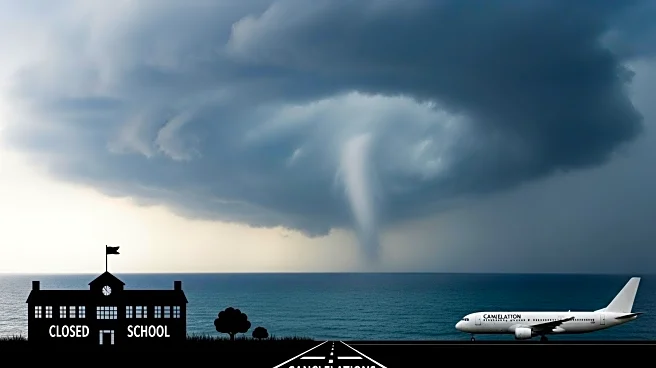What is the story about?
What's Happening?
Typhoon Ragasa, a powerful storm, is moving towards southern China after causing significant damage in the Philippines. The typhoon, initially a super typhoon, has weakened slightly but remains a formidable force with sustained winds equivalent to a Category 4 hurricane. It has led to widespread evacuations and disruptions in major cities like Hong Kong, Macau, Shenzhen, and Guangzhou. The storm has triggered landslides and flooding in the Philippines, resulting in casualties and significant property damage. Authorities in China have activated emergency responses, with schools closed, businesses shut, and public transport halted.
Why It's Important?
Typhoon Ragasa poses a significant threat to densely populated regions in southern China, potentially impacting tens of millions of people. The storm's approach has led to extensive preparations and disruptions, highlighting the vulnerability of megacities to natural disasters. The situation underscores the importance of effective disaster management and preparedness in mitigating the impact of such events. The typhoon's impact on the Philippines has already been severe, affecting agricultural workers and leading to significant economic losses. The storm's trajectory and potential landfall in China could further exacerbate the situation.
What's Next?
As Typhoon Ragasa continues its path, authorities in China are expected to maintain high alert levels and implement further evacuation measures. The storm is likely to make landfall in Guangdong Province, necessitating continued emergency responses and coordination among local governments. The focus will be on minimizing casualties and property damage while ensuring the safety of residents in affected areas. The aftermath of the storm will require extensive recovery efforts and support for impacted communities, both in the Philippines and China.
Beyond the Headlines
The typhoon highlights broader issues related to climate change and the increasing frequency of extreme weather events. It raises questions about the resilience of urban infrastructure and the need for sustainable development practices to mitigate the impact of such disasters. The situation also reflects the challenges faced by governments in balancing economic growth with environmental protection and disaster preparedness.
AI Generated Content
Do you find this article useful?














